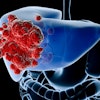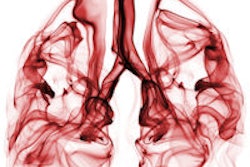
Using lung cancer risk to determine which smokers should receive CT screening would potentially save more lives than using screening criteria set by the U.S. Preventive Services Task Force (USPSTF), according to a new study published May 15 in the Journal of the American Medical Association.
More than 9,000 extra lives over five years would be saved if the new model for risk-based CT lung cancer screening of smokers were implemented in the U.S., an increase of some 20% over the number of lives saved with USPSTF criteria, wrote a group from the U.S. and Australia. The model tends to screen more older individuals, as well as those with shorter smoking histories than found under the USPSTF criteria (JAMA, May 15, 2016).
The landmark National Lung Screening Trial (NLST) found that CT screening of smokers could result in a 20% reduction in deaths from lung cancer compared to screening with x-ray. The NLST criteria for determining who should get screened were largely adopted by the USPSTF in its positive analysis of the benefits and harms of screening, an analysis that formed the basis for Medicare reimbursement.
The NLST screened current or former smokers ("ever-smokers") between the ages of 55 and 80 who had smoking histories of at least 30 pack-years; if they had quit smoking, it had been within the past 15 years (the screening criteria adopted by Medicare are slightly different in that they don't cover individuals ages 77 to 80).
But the NLST/USPSTF criteria ignored subtle differences in lung cancer risk among high-risk ever-smokers: 88% of lung cancer deaths occurred in 60% of individuals, while 20% of those who met the NLST/USPSTF criteria accounted for just 1% of deaths from lung cancer. What if more-specific criteria could be found?
A research team led by Hormuzd Katki, PhD, of the U.S. National Cancer Institute decided to analyze cancer incidence and death models that could be used to create more-specific screening guidelines. The group used data not only from the NLST, but also from the Prostate, Lung, Colorectal, and Ovarian (PLCO) Cancer Screening Trial, augmented with data from the National Health Interview Survey.
Katki et al developed models to predict the five-year cumulative risk of death for smokers under the USPSTF criteria, as well as for various clinical variables such as age, sex, race, education, body mass index, and family history of emphysema and lung cancer. They also incorporated smoking variables such as cigarettes per day, smoking duration, and the number of years an individual smoked and the number of years since quitting.
The researchers said the USPSTF criteria included 36% of individuals who were at low risk of lung cancer -- and therefore probably shouldn't be screened. On the other hand, the new risk-based criteria generally included "more current smokers overall, more low-intensity long-term current smokers, and more high-intensity former smokers who have quit for more than 15 years."
For example, under the new model, 21.5% of those getting screened had smoked fewer than 30 years. The USPSTF criteria would not screen anyone with a smoking history of less than 30 years.
There were also differences in the ages that would be screened. For example, under the new criteria, 44.4% of those screened would be ages 70 to 80, compared with only 21.9% under the USPSTF model. Likewise, only 10.9% of those screened under the new criteria were in the 50 to 59 age range, while 29.5% of those under the USPSTF model were in this age bracket.
The researchers then estimated the number of lives that would be saved if both criteria were used in a population of 9 million individuals -- the number of individuals in the U.S. who currently qualify under USPSTF criteria. They concluded that 9,229 lives would be saved over five years of screening.
| Effectiveness of USPSTF vs. risk-based CT lung screening model | ||
| USPSTF | Risk-based criteria | |
| No. of smokers screened | 9 million | 9 million |
| Lung cancer deaths prevented over 5 years | 46,488 | 55,717 |
| No. needed to screen to prevent 1 death | 194 | 162 |
| False-positive CT screens per prevented death | 133 | 116 |
| Percent of total deaths preventable by CT screening | 57% | 68% |
"The superior performance of risk-based screening is highlighted by the estimate that 90% of CT-preventable lung cancer deaths are possibly preventable by a risk-based strategy that screens only 49% of U.S. ever-smokers aged 50 to 80 years," the researchers concluded.



















